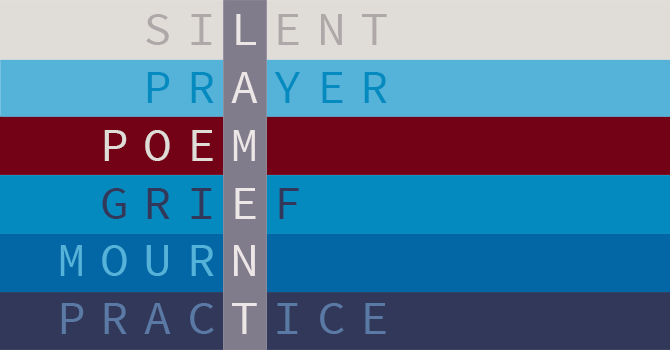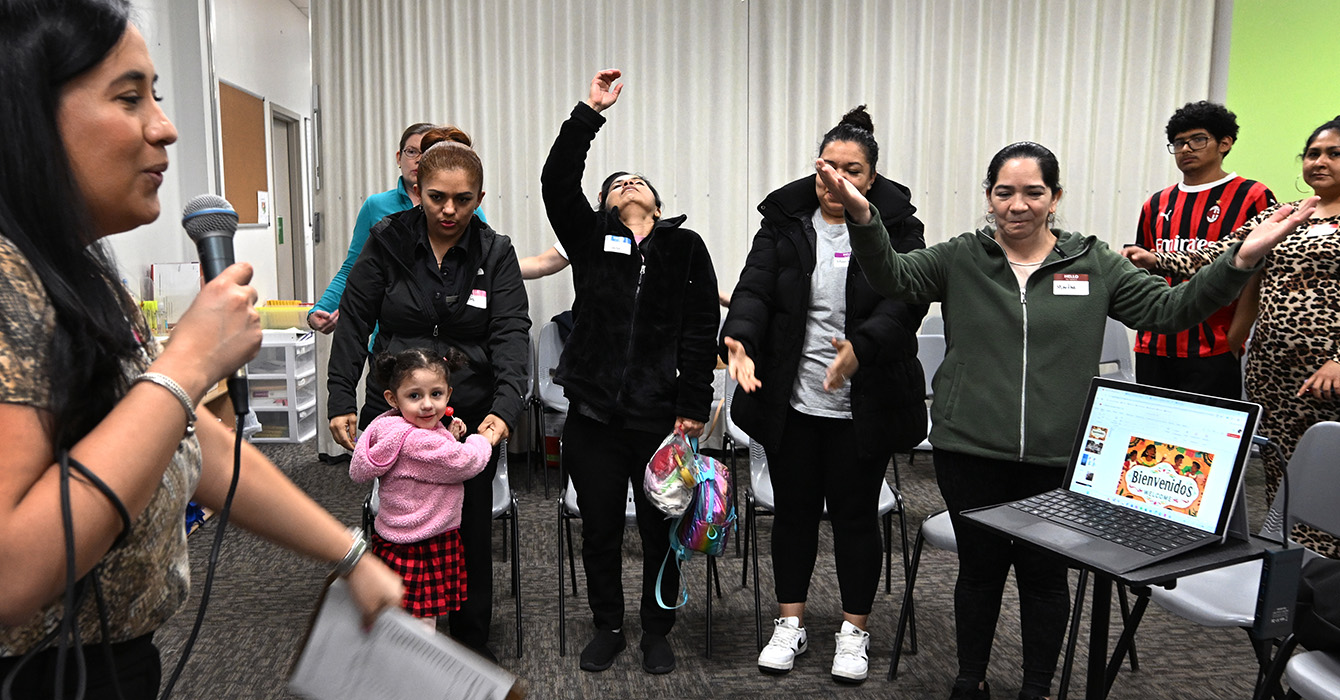On a recent Sunday afternoon, my children, my husband and I gathered for prayer. We lit a candle, and I wrote the alphabet down the side of a piece of blank paper. I told the children that God invites us to bring our sadness and our anger when we pray.
I named some of my own griefs, and then I asked them what they were sad about -- what they had lost to COVID-19 that they wanted to lament.
I asked them to write an acrostic poem, beginning with the letter A.
“All the children who can’t go to school,” they said, “especially those who need school lunches.”
Our prayer that day was inspired by the book of Lamentations.
Lament is the practice of mourning what is wrong in the world and calling on God to repair it. It’s modeled in the Psalms, and also in the book of Lamentations, so I turned there for inspiration early in the pandemic.
My emotions had grown volatile as schools and churches closed and our family reunions, birthday parties, Easter dinners and summer plans were canceled one by one.
I found myself resorting to numbing practices -- scrolling Twitter endlessly, watching bad television, eating too much cake. While my children seemed to be adapting better than I was to this new way of life, I wondered whether they were just repressing their feelings; I worried that I wasn’t giving them space to grieve.
So I resolved -- for the sake of my own spiritual health and for the good of my family -- to make the practice of lament a priority.
Lamentations is a book of five poems that express the grief, anger, fear and despair of survivors in the aftermath of the destruction of Jerusalem. Throughout, multiple poetic voices, some individual and some communal, call on God to see and to act.
It opens with a scene that has become too familiar. “How lonely sits the city that once was full of people!” the poet begins. “The roads to Zion mourn, for no one comes to the festivals; all her gates are desolate” (Lamentations 1:1a, 4a NRSV).
Early on, as I looked out my window at the empty streets and I looked at the crossed-out plans on my calendar, the words of the poet felt apt. I knew that my griefs were minor compared with what some people were experiencing, but they were real, and I needed to lament what we’d lost.
Back in March, I thought we’d be done by now. But six months in, we’re still masked and isolated, with a faltering economy and nearly 200,000 U.S. lives lost to COVID-19.
Lately, I’ve noticed a change in myself and in my family: our energy is gone. I can’t seem to focus for more than five minutes -- I find myself staring into space -- and some nights, I can’t muster the energy to cook more than toast for dinner.
Months into this disaster, the poetry of Lamentations still seems to describe my state. “We are weary,” the poet says. “Because of this our hearts are sick, because of these things our eyes have grown dim” (Lamentations 5:5b, 17).
Lamentations is a beautiful example of the way that poetry can help kids, and all of us, express our grief. It offers a form to contain that which feels uncontainable and uncontrollable. It invites us to find words for our feelings and to fit them into a fixed form, whether that’s a sonnet, a haiku, a fancy villanelle or an acrostic.
The first four poems in Lamentations are acrostics: the first verse of each begins with the first letter of the Hebrew alphabet, and the subsequent verses progress through the letters sequentially.
Why use the alphabetical form of the acrostic to express sorrow? The choice shows us something about grief -- first, that it is vast. Grief goes from A to Z, and then it goes from A to Z again, and again, and again. It seems infinite; it is more than what we have language for.
This artistic choice also signifies that grief needs structure. Kathleen O’Connor, a professor emerita of Hebrew Scriptures, says in “Lamentations and the Tears of the World”: “The alphabet gives both order and shape to suffering that is otherwise inherently chaotic, formless, and out of control. … It tries to force unspeakable pain into a container that is familiar and recognizable even as suffering eludes containment.”
Lamentations’ acrostics are not all the same. The first two poems offer just one verse per letter. But the third poem is three times as long -- with three verses per letter -- and then the fourth poem is shorter, with fewer lines than the others.
I love the way these poems show us that grief comes in waves and that the waves vary in intensity, and that perhaps sometimes we are too tired to lament as long as we once did.
The book of Lamentations shows us that lament needs form. Lament needs to go from A to Z. Lament will repeat. It will wax and wane in ways that cannot be predicted. God will seem silent. Relief, when it comes, may feel minor, more exhausted than triumphant.
With this in mind, my family gathered around our candle to follow the poet of Lamentations in making our own acrostic of grief. Here’s what we came up with, to start:
All the children who can’t go to school, especially those who need school lunches
Birthday parties might not happen
Celebrations like weddings postponed
Death
Empty streets and empty shelves
Field trips canceled
Grandparents who are lonely and in danger …
I recommend trying this with your family or congregation, or in your journal. Make your own acrostic of grief. Name the things you see that are wrong in the world. Call on God to change them.
And then read Lamentations 3:22-23, remembering that even in our grief,
The steadfast love of the Lord never ceases,
[God’s] mercies never come to an end;
they are new every morning;
great is your faithfulness.



















